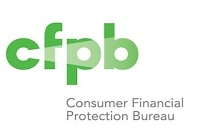Advertisement
CFPB Issues Long-Awaited Industry QM and Ability-to-Repay Rules

The Consumer Financial Protection Bureau (CFPB) has adopted a new rule that will protect consumers from irresponsible mortgage lending by requiring lenders to ensure prospective buyers have the ability-to-repay their mortgage. The rule also protects borrowers from risky lending practices such as “no doc” and “interest only” features that contributed to many homeowners ending up in delinquency and foreclosure after the 2008 housing collapse.
“When consumers sit down at the closing table, they shouldn’t be set up to fail with mortgages they cannot afford,” said CFPB Director Richard Cordray. “Our Ability-to-Repay rule protects borrowers from the kinds of risky lending practices that resulted in so many families losing their homes. This common-sense rule ensures responsible borrowers get responsible loans.”
The 2010 Dodd-Frank Wall Street Reform and Consumer Protection Act created broad-based changes to how creditors make loans and included new ability-to-repay requirements, which the CFPB is charged with implementing. Under the Ability-to-Repay rule, all new mortgages must comply with basic requirements that protect consumers from taking on loans they don’t have the financial means to pay back. Among the features of the new rule:
►Financial information has to be supplied and verified: Lenders must look at a consumer’s financial information. A lender generally must document: A borrower’s employment status; income and assets; current debt obligations; credit history; monthly payments on the mortgage; monthly payments on any other mortgages on the same property; and monthly payments for mortgage-related obligations. This means that lenders can no longer offer no-doc, low-doc loans, where lenders made quick sales by not requiring documentation, then offloaded these risky mortgages by selling them to investors.
►A borrower has to have sufficient assets or income to pay back the loan: Lenders must evaluate and conclude that the borrower can repay the loan. For example, lenders may look at the consumer’s debt-to-income ratio—their total monthly debt divided by their total monthly gross income. Knowing how much money a consumer earns and is expected to earn, and knowing how much they already owe, helps a lender determine how much more debt a consumer can take on.
►Teaser rates can no longer mask the true cost of a mortgage: Lenders can no longer base their evaluation of a consumer’s ability-to-repay on teaser rates. Lenders will have to determine the consumer’s ability-to-repay both the principal and the interest over the long term—not just during an introductory period when the rate may be lower.
“MBA [Mortgage Bankers Association] agrees that the goal of this regulation, ensuring that borrowers receive loans that they can repay, is in everyone’s best interest," said Debra W. Still, CMB, chairman of the Mortgage Bankers Association. "We cannot, and should not, go back to the high risk lending environment of the early 2000s. Our concern has always been that we balance this goal with other housing policy objectives, particularly the objective to ensure the availability of mortgage credit to qualified borrowers. And right now, credit is tighter than at any point we can remember."
Lenders will be presumed to have complied with the Ability-to-Repay rule if they issue “Qualified Mortgages.” These loans must meet certain requirements which prohibit or limit the risky features that harmed consumers in the recent mortgage crisis. If a lender complies with the clear criteria of a QM, consumers will have greater assurance that they can pay back the loan. Among the features of a QM:
►No excess upfront points and fees: A QM limits points and fees including those used to compensate loan originators, such as loan officers and brokers. When lenders tack on excessive points and fees to the origination costs, consumers end up paying a lot more than planned.
►No toxic loan features: A QM cannot have risky loan features, such as terms that exceed 30 years, interest-only payments, or negative-amortization payments where the principal amount increases. In the lead up to the crisis, too many consumers took on risky loans that they didn’t understand. They didn’t realize their debt or payments could increase, or that they weren’t building any equity in the home.
►Cap on how much income can go toward debt: QMs generally will be provided to people who have debt-to-income (DTI) ratios less than or equal to 43 percent. This requirement helps ensure consumers are only getting what they can likely afford. Before the crisis, many consumers took on mortgages that raised their debt levels so high that it was nearly impossible for them to repay the mortgage considering all their financial obligations.
“ICBA [Independent Community Bankers of America] and the nation’s community bankers have been strong advocates for tailored rules that will address the problem actors in the mortgage industry while not inhibiting community banks’ ability to provide mortgages to their customers,” said Camden R. Fine, ICBA president and CEO. “Excessively rigid rules would threaten to force community banks out of the mortgage market, making it harder for Main Street consumers to get a home loan and slowing the nation’s housing recovery. ICBA appreciates CFPB’s recognition of community banks as common-sense, relationship lenders that help their communities thrive.”
For a temporary, transitional period, loans that do not have a 43 percent DTI ratio but meet government affordability or other standards—such as that they are eligible for purchase by the Fannie Mae or Freddie Mac—will be considered QMs.
"Our initial review of the QM rule indicates that this balanced approach can be achieved," said Barry Rutenberg, chairman of the National Association of Home Builders (NAHB). "NAHB is encouraged that regulators heeded concerns from the housing industry to craft a broad standard that includes many of today's sound mortgage products, including fixed-rate and adjustable-rate mortgages, under the QM standard."
There are two kinds of QMs that have different protective features for a consumer and different legal consequences for the lender. The first, QMs with a rebuttable presumption, are higher-priced loans. These loans are generally given to consumers with insufficient or weak credit history. Legally, lenders that offer these loans are presumed to have determined that the borrower had an ability-to-repay the loan.
"We believe that permanently removing certain loan programs with risky features such as no-doc loans to W-2 borrowers will help the housing market in the long run," said John H. P. Hudson, Government Affairs Committee Chair of NAMB—The Association of Mortgage Professionals. "However, arbitrary caps on points and fees which do not impact a consumer's ability to repay and without any clear definitions, will ultimately harm consumers by reducing competition, raising borrower costs and promoting the policies of 'Too Big to Fail' instutions. The rule can promote a bias against non-creditor mortgage companies and the congressional intent of the Ability-to-Repay Rule was not to put the CFPB in a position of picking industry winners and losers."
Consumers can challenge that presumption, though, by proving that they did not, in fact, have sufficient income to pay the mortgage and their other living expenses. The second, QMs that have a safe harbor status, are generally lower-priced loans. They are generally prime loans that are given to consumers who are considered to be less risky. They will also offer lenders the greatest legal certainty that they are complying with the new Ability-to-Repay rule. Consumers can legally challenge their lender if they believe the loan does not meet the definition of a QM.
“Ultimately, the final verdict on this rule will be made by the market. We believe the rule will effectively block the return of risky product features and inadequate documentation," said Still. "If it also provides lenders the certainty needed to originate qualified mortgages broadly across the market to creditworthy borrowers, it will have been a success. However, if the result is a tightening of credit as lenders pull back from offering loans that would create greater risk of litigation, the CFPB may need to quickly revisit the rule to avoid harming the housing recovery.”
The Ability-to-Repay rule does not affect the rights of a consumer to challenge a lender for violating any other federal consumer protection laws.
The CFPB is also releasing proposed amendments to its Ability-to-Repay rule. These amendments would, among other things, exempt certain non-profit creditors that work with low- and moderate-income consumers. The proposed amendments would also make exceptions for certain homeownership stabilization programs, such as those that offer loans made in connection with the Making Home Affordable program, which help consumers avoid foreclosure. The proposed amendments would also provide QM status for certain loans made and held in portfolio by small creditors, such as community banks and credit unions. The proposed amendments invite comment on how to calculate loan origination compensation under the points and fees provision of Qualified Mortgages.
The proposed amendments, if adopted, would be finalized this spring and go into effect at the same time as the Ability-to-Repay rule in January 2014. The CFPB is dedicated to working with industry and consumers for a smooth transition to the new rule. To help creditors with compliance, the CFPB will, among other things, be publishing plain-language translations of the regulation for lenders in booklet and video form, issuing implementation guides, and, in coordination with other agencies, releasing materials that help lenders understand supervisory expectations. As the effective date approaches, the CFPB will give consumers information about their new rights under these rules.
About the author





